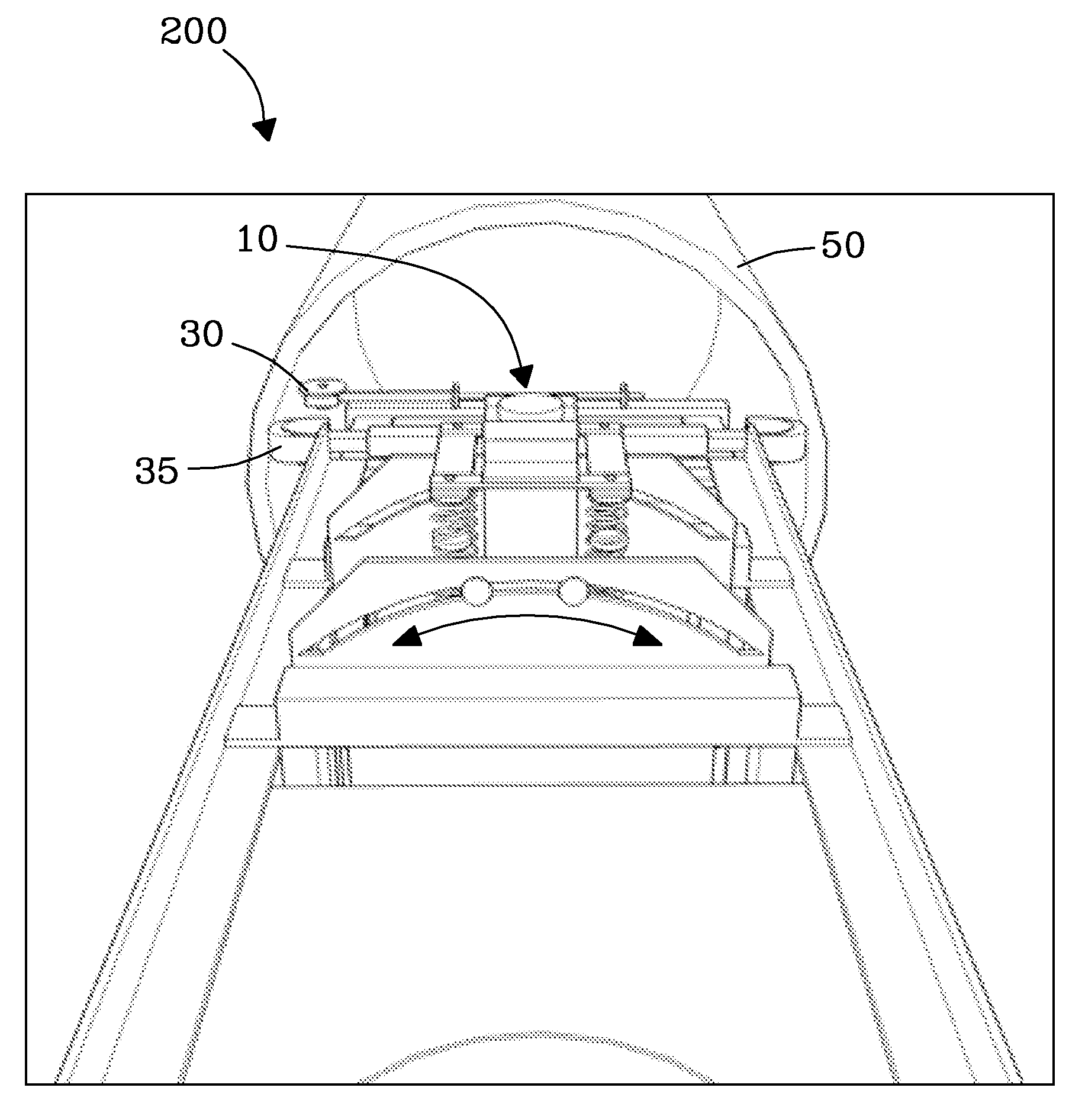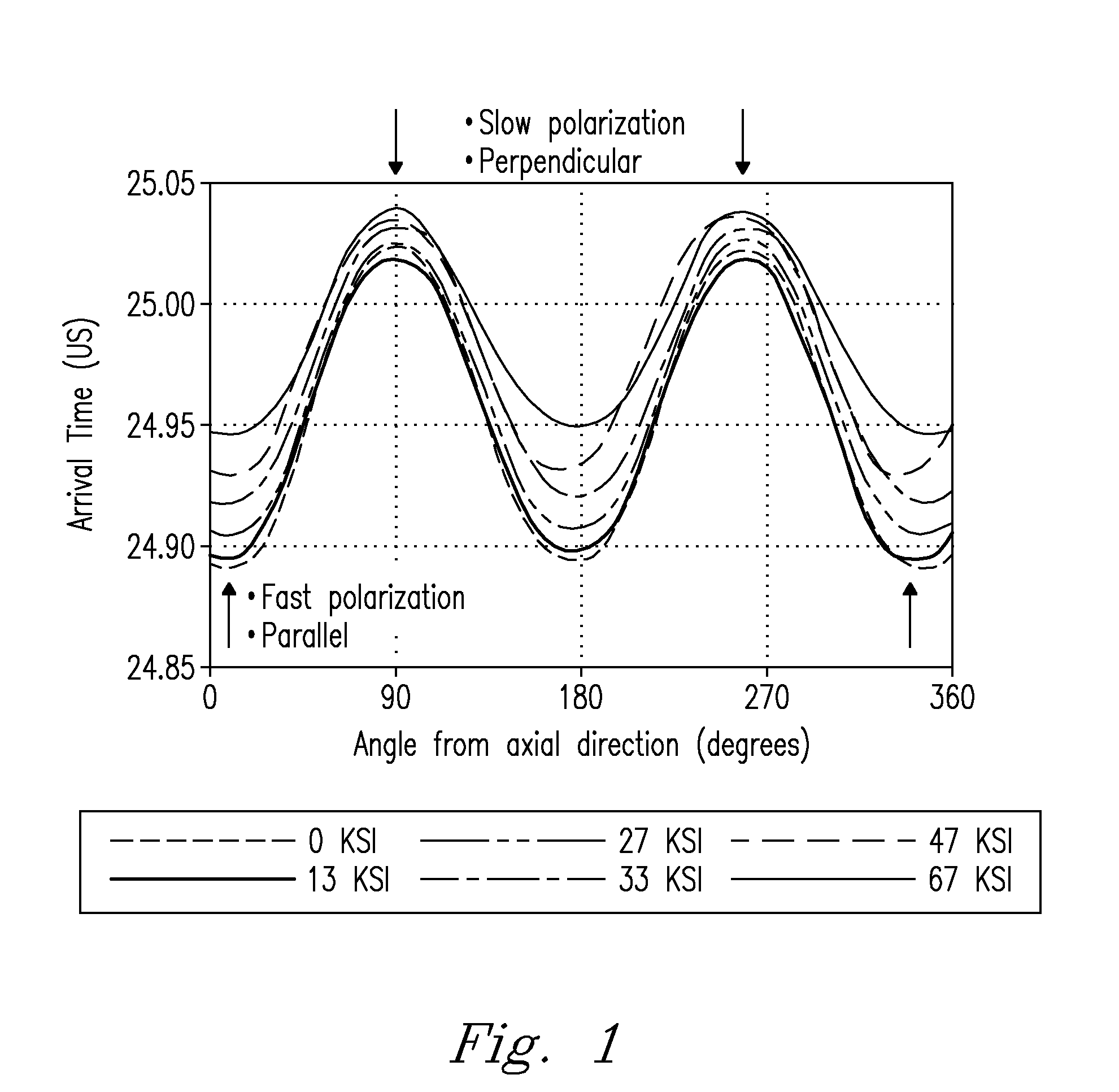System and process for ultrasonic characterization of deformed structures
a technology of ultrasonic characterization and process, applied in the field of ultrasonic assessment methods and systems, can solve the problems of delayed failure, difficult measurement required to make these assessments, and failures that may occur immediately, so as to achieve effective deployment, reduce the burden of measurement, and reduce the cost
- Summary
- Abstract
- Description
- Claims
- Application Information
AI Technical Summary
Benefits of technology
Problems solved by technology
Method used
Image
Examples
example 1
Nondestructive Examination (NDE) Measurements of a Bulged Pipeline
[0057]Scanning measurements were collected for a 20″ diameter natural gas pipeline removed from service after a significant bulge was found. Scans were performed at several positions around the circumference. In one test, as the EMAT scanned the pipeline, time (i.e., time-of-flight) required for shear waves to traverse the thickness of the pipeline several times was determined every 0.1 inches along the axis of the pipeline. Spot measurements were also performed using time of flight of the shear waves to measure scanning effects when determining shear wave birefringence.
example 2
NDE Measurements and Assessment of Damaged Pipelines Along a Fault
[0058]Ultrasonic measurements of the strain (due to bending) were collected on bent pipelines replacing a section of a natural gas pipeline which crossed an earthquake fault in the San Francisco Bay Area (California, USA). Data collected on straight and bent pipelines provided useful data for determining the precision, accuracy, and minimum detectable strain levels. Critical baseline measurements were obtained on bent pipelines prior to installation of the replacement pipelines, thus allowing for future assessment of the integrity of the pipeline should subsequent earth movements be detected along the fault. Thirteen 40 foot sections of X60 / X65 pipeline were available for testing at the fault crossing work site. Pipelines were nominally 40 feet long, 36″ in diameter and ½″ thick. Ultrasonic measurements were collected on 5 straight pipelines. Pipeline ends were labeled “A” and “B”. Scans were started from end “B” and ...
example 3
NDE Measurements of Dented Pipelines
[0059]Dented pipelines were scanned under remote control along the axis of the pipeline from the interior. Pipeline was scanned from the interior along the axis utilizing the non-contact EMAT sensor in the motorized cart configuration. Preferred speeds were greater than 2″ per second, but are not limited thereto. The EMAT generated a wave which traveled through the thickness of the pipeline every 0.2″ along the axis of the pipeline as the sensor was moved continuously along the pipeline. Data were collected every 0.2″ along the axis length, but again are not limited thereto.
PUM
| Property | Measurement | Unit |
|---|---|---|
| length | aaaaa | aaaaa |
| angles | aaaaa | aaaaa |
| speed | aaaaa | aaaaa |
Abstract
Description
Claims
Application Information
 Login to View More
Login to View More - R&D
- Intellectual Property
- Life Sciences
- Materials
- Tech Scout
- Unparalleled Data Quality
- Higher Quality Content
- 60% Fewer Hallucinations
Browse by: Latest US Patents, China's latest patents, Technical Efficacy Thesaurus, Application Domain, Technology Topic, Popular Technical Reports.
© 2025 PatSnap. All rights reserved.Legal|Privacy policy|Modern Slavery Act Transparency Statement|Sitemap|About US| Contact US: help@patsnap.com



